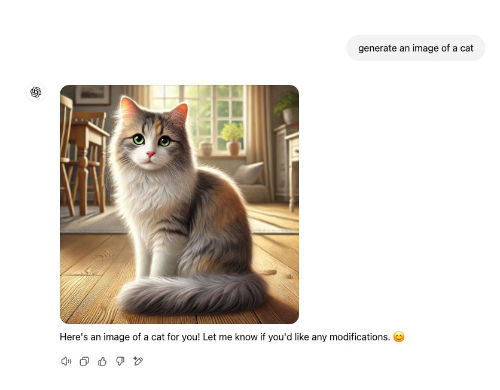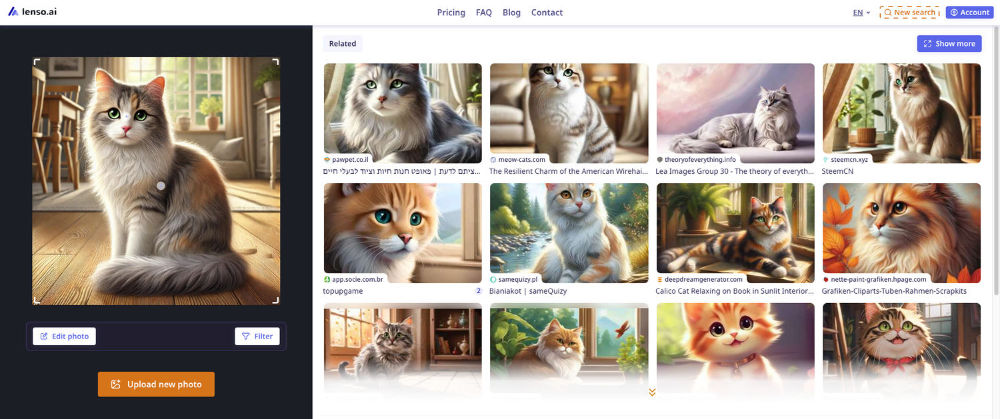
Preview in:
Types of AI and how to tell them apart
The main difference between generative AI and non-generative AI is their function and output:
1. Generative AI (Creates New Content)
- Purpose: Generates entirely new text, images, video, music, or other content based on patterns learned from data.
- How it works: Uses models such as neural networks to create new data that resembles existing data.
- Example: ChatGPT can write an original story, DALL-E can create an entirely new image from a prompt, and a text to video AI generator can produce unique video content from textual descriptions.
- Use cases: Content creation, design, coding assistance. LLM gateways can be utilized for this purpose, enhancing the creation of original content.
2. Non-generative AI (data processing & analysis)
- Purpose: Identifies patterns, makes decisions, classifies, predicts, or recommends, but does not generate original content.
- How it works: Uses AI models such as decision trees, support vector machines (SVMs), and deep learning classifiers to analyze and process existing data.
- Example: Netflix recommends movies based on your viewing history, but doesn't generate new movies. Lenso.ai’s facial recognition system can identify a person, but it doesn't create new faces.
- Use cases: Fraud detection, search ranking, spam filtering, reverse image search.
The threat of AI
AI-generated content is starting to flood the Internet. With the growing popularity of ChatGPT, it is easy to set up a bot to generate essays, articles, or even comments on social media. In addition, AI music, images, and Image to video AI creations have begun to gain popularity in online ads, banners, and more.
Should you be concerned?
Right now, we can usually tell the difference between AI-generated content and the real thing, but that's not always the case. Often, AI images, videos, or text look so real that they can be mistaken for the real thing. In such cases, using an AI checker can help verify whether the content was machine-generated or not. Anchor:AI checker
However, all AI is trained on human-generated content. While it may seem like these systems create something new, they are built on patterns and information already available. With the growing use of tools like free ChatGPT, it’s easy to access AI-generated content—but that doesn't mean it can fully replace human creativity. AI still lacks the ability to add real emotion, depth, or original thought, which is why human-made art and writing continue to hold more value.
AI in lenso.ai - is it a threat to anyone’s creativity?
Lenso.ai is not a generative AI, so it does not compromise creative art and human-created content. It does not create new content, but operates on the images that have already been created.
Can lenso.ai detect AI content?
Uploading AI-generated images to lenso.ai usually returns more AI content - be it places, faces, similar images or other photos. This can be helpful when trying to check if an image we have is AI-generated, but it can't be used as the only proof.


Learn more about AI image search here:
If you would like to try AI image search for yourself, check out lenso.ai!
Continue reading

General
Christmas Gift Ideas for 2025 (Budget-Friendly Options)
If you have a hard time finding gifts this year, keep reading! Whether you’re looking for a present for family, friends, co-workers, or Secret Santa, these propositions are sure to help you figure out the best gift for your budget.

General
4 Best ProFaceFinder Alternatives for Face Search
ProFaceFinder became a well-known facial search tool, used by many to find their faces online. However, there are some disadvantages to this tool that can be avoided with other facial search engines. Here’s our ranking of the top 4 best facial search alternatives for ProFaceFinder.

General
Facial recognition. What is it and why do we need it?
Is the image of your face safe online? Online face lookup is here to help you find it. If you're curious about the technology behind face recognition, how features are compared, and how to keep your images safe in case of leaks, keep on reading!

General
Best Tools to Simplify Your Work and Save Time
In a world where every second counts, it is essential to find some smart ways that could make your daily tasks simple and save time. Fortunately, today you can find a lot of online tools to streamline your tasks, like managing projects, creating visuals, or translating content into different languages. Let’s explore the best online tools that can simplify your work, handle repetitive tasks, and save precious time.

